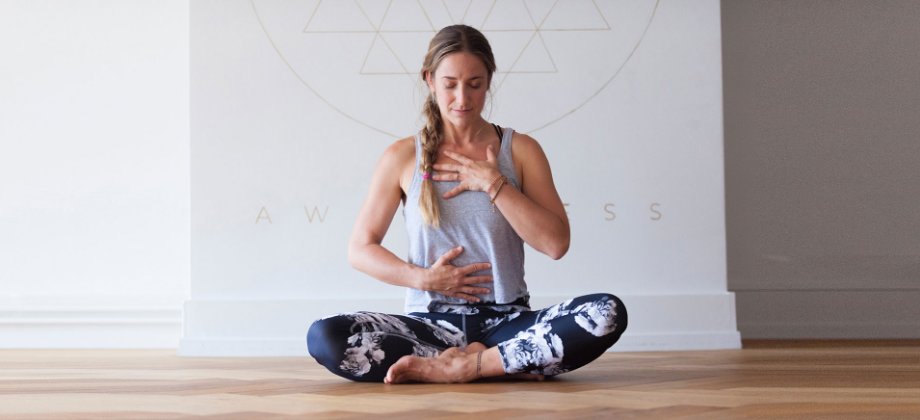
How Yoga Teachers Can Optimize Their Time for Work to be Sustainable
As a yoga teacher, creative, and entrepreneur, I handle a lot of projects on a day-to-day basis, and I’m sure that’s the case for you, too. Chances are you don’t only have yoga classes to teach: you have to prepare them, answer emails, plan next month’s workshop, write social media posts, get in touch with your accountant, brainstorm on that collaboration with other teachers at the studio… If you’re a yoga studio owner or part of a team, your tasks might even be more diverse than that.
It can be very tricky to keep the overwhelm at bay when there is so much to do, and to forget about the joy we find in the process.
It can be very tricky to keep the overwhelm at bay when there is so much to do, and to forget about the joy we find in the process. Besides, you notice you always have to be thinking about the next thing, wondering where on earth you’ll find the time to get all those urgent and important items on the list done. Some days, you find yourself thinking about how ironic it is that as a yoga teacher, it is so hard to find balance in it all.
A great place to start optimizing your time is understanding what you need for optimization.
In this article, you’ll find tips to identify your needs in terms of organization, some important reminders when it comes to planning and optimization, and practical tools to make your day-to-day and organization that much easier.

What does your perfect day look like?
A great place to start optimizing your time is understanding what you need for optimization. The best way to do that is with some questions and brainstorming. Grab your notebook, bullet journal, mind map software, or whatever tool you love to get started on your projects.
Here are five questions to ask yourself:
- What does a perfect day look like for me?
You can be as detailed as you want, and focus on the feelings as well as the activities you do during that ideal day. - Where am I wasting time AND energy during the day?
It can be commuting, but also the energy it takes you to switch from one task to the other, or teaching a specific kind of class. - What unnecessary stress am I putting on myself?
Like doubting your ability to finish a task on time. - Where does that unnecessary stress come from?
Using the task example, the stress doesn’t necessarily come from the task itself, but from your mindset around it. - What habits aren’t working for me right now?
Is waking up at 5 am to meditate for an hour really what you need right now, or would an hour of sleep be more helpful?
Asking myself the questions above, I realized that right now, I prefer to have a couple of hours to myself before starting to work. I realized that I’d rather spend a full hour on emails every second day rather than 20 minutes on them every day. I also noticed that the reason I wasn’t accomplishing as much as I wanted wasn’t because I wasn’t working enough hours, but spending a lot of time wondering about what my priorities should be.
… And how close are you to it?
Once these questions are answered you end up with a list of things that you really want, and things that are getting in your way. Establishing these needs and obstacles will help you choose the right tools and habits so they can help you get to that perfect day, with the feeling you’re after. Let’s have a look at the underlying message behind them, using examples. Under each example, I suggest a tool you can look into to counter the obstacles that get in your way.
- A walk in the morning is really important for you. In the way of enjoying that walk is not knowing what you’ll be working on at your desk during the day, and not knowing where you left all your to-do lists. What’s working really well is having a theme for all your classes of the week, so that’s one less thing to worry about.
→ What you might need: a big project planner to store your ideas, your to-do lists, and a database of class plans. Look into Notion in the list of online tools.
- Spending more time with your children at home is important to you. What’s in the way of that is worrying that you haven’t done enough work, which makes it hard for you to disconnect and be really present with your children. What’s working well is having a team meeting with your fellow teachers and yoga studio managers every Monday.
→ What you might need: an updated calendar and/or to track your time! Look into “Toggl” in the list of tools below. There’s only so much you can do during the day, and seeing how much you’ve accomplished can help.
- Transitioning from yoga teacher to online yoga teacher and digital content creator is one of your priorities. What’s in your way is a lack of energy to focus on your goals and creating a plan to get there, which makes you feel like you’re not moving forward. What’s working is relying on regular meditation workshops around the country for income.
→ What you might need: a platform like Trello for project planning, but more importantly, you might consider time-blocking 30 minutes of brainstorming and goal-setting each day in order to keep your morale high and your dream closer to you.
“The adrenaline crash”
I recently read a post by Michelle Elman (author of “Am I Ugly?” and confidence coach) on Instagram where she explained that adrenaline crashes are a real thing: feeling drained after doing something that requires a lot of your energy. In her case, it’s public speaking, but for us teachers, every class or workshop is a bit like public speaking. It takes a lot of energy to not only speak to a crowd, but to guide them through anatomically sound and mentally fulfilling classes.
Experiencing adrenaline crashes is completely normal and human.
Experiencing adrenaline crashes is completely normal and human, and to navigate them, it’s crucial to schedule recovery time, just like Michelle explained in her post. I feel like a broken record by now, but I’ll keep insisting on it before it becomes the norm: even if your work is your passion, it doesn’t mean you have to work on it relentlessly
Rest plays a major role in our productivity and it’s crucial that, yes, even us yoga teachers take regular breaks—if not on a daily basis, then at least on a weekly basis.
Create white space in your schedule. Let everyone know that you’re busy from 2 to 3 pm while you have a nap. Close your computer when it’s time for you to go have a proper rest. Don’t underestimate the power that rest can have on your clarity and productivity.

Online tools & quick tips:
Now that you have the direction you want to take and the kind of needs you have when it comes to planning, organizing, and optimizing, let’s look at some habits and tools to try.
Some practical things you can give a try (and give them a fair try!):
- Work around your teaching schedule. If you know you finish late on Tuesdays, see if you can wake up a little later or start desk work a little later to prevent exhaustion.
- Schedule a time for emails and social media. They send a lot of clutter our way and prevent us from doing our most important work well. You don’t have to add it to your calendar, but you might want to limit your use to twice per week, once your most important task of the day is done.
- Plan only 3 tasks per day. I know this one might be difficult to come around to, especially if you have lots of tiny tasks to get done. In this case, see if you can find an umbrella term for that, like admin, decluttering, or any creative name that might motivate you to get them done. Note: I started with 8+ tasks on my to-do list/day and slowly downsized to 3. I get more done now than I ever did with 8+ on the list.
- Try time-blocking. Simply put, time-blocking means dedicated specific times of the day or week to specific tasks. For example, blocking time for planning every Monday morning, or for social media writing every Wednesday morning. It helps a lot with decision fatigue
Online tools to give a go:
Toggl — one of the best, latest additions to my habits. Allows you to track your time and you can even link it to your calendar, and it will suggest tracking what’s in your calendar as well. At the end of the day, you can see how much you’ve worked because you’ve tracked it.
Notion — an all-in-one platform that allows you to have trello-evernote-google drive-excel sheets all in one. They have a lot of templates you can use and even a community on Facebook where you can share and download templates. I’ve been having a lot of fun creating an e-bullet-journal, where all my yoga class plans are but also my to-do lists and my brainstorm sessions are.
Trello — great for project management, and a tool many of us know and/or use, which makes it easy to share with other people on your yogi team or if you’re outsourcing tasks.
Inbox when Ready — a Chrome extension you can add to your browser in order to hide your inbox. It adds so much peace to your inbox. It means you can log in if you have important emails to write without being distracted by the ones that are in your inbox.
I hope this article has provided some clarity and guidance to take your next step. Have fun with experimenting!






